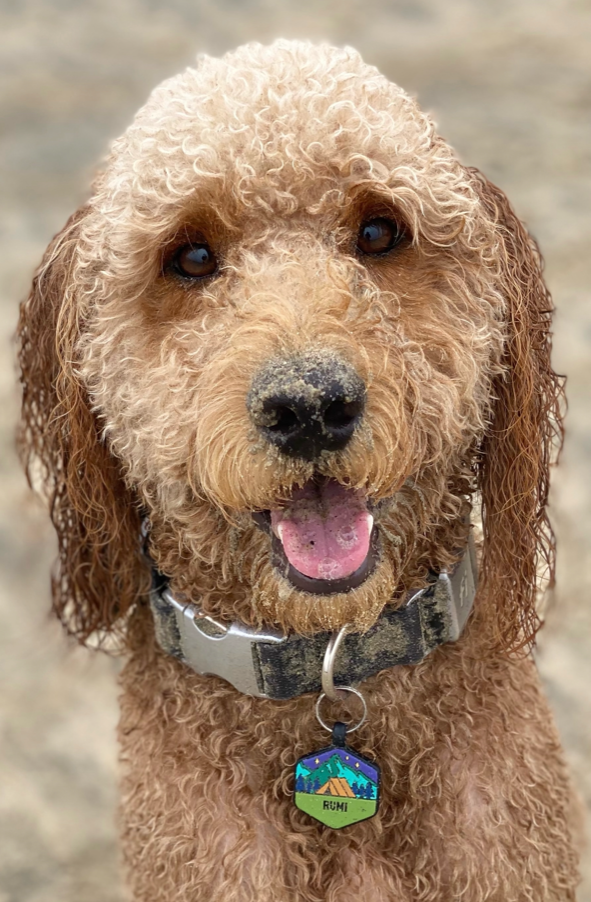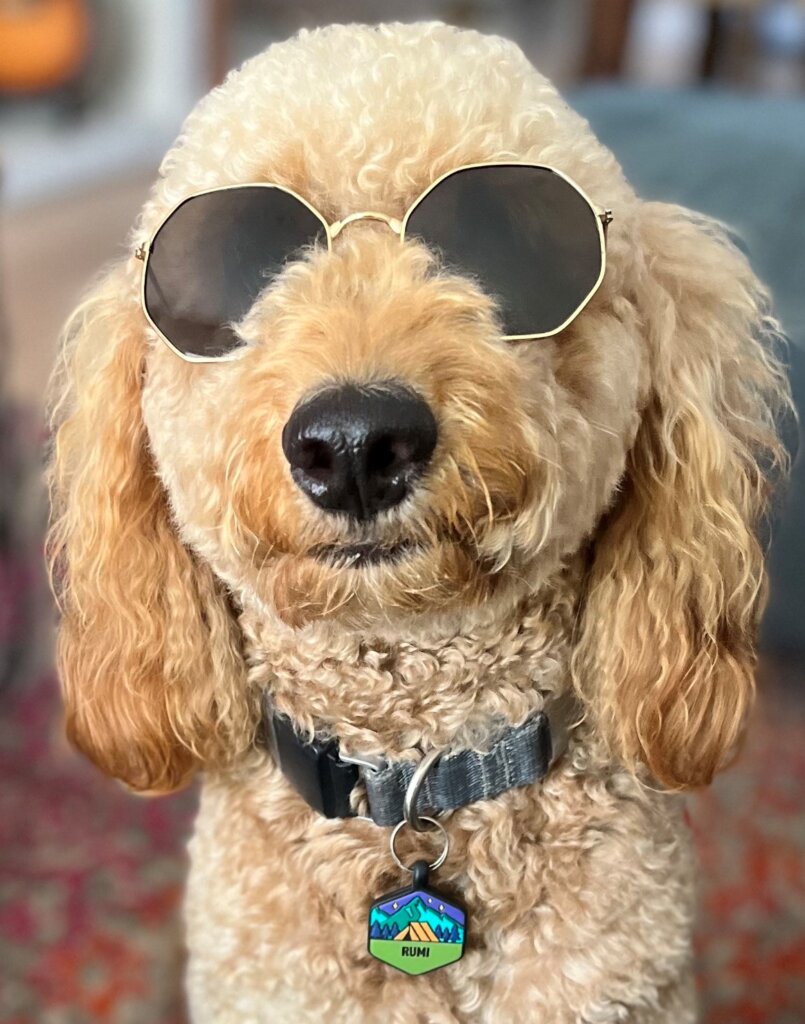
That’s my loveable dog Rumi Rooh, enjoying a day at the beach. He’s SwaraLink’s mascot (unofficially) and also our Sr. Director of Treato Consumption (officially). Today, October 4th, is his second birthday! Happy birthday Rumi!
October 4 is a special day for me for other reasons as well. Five years ago today, I created SwaraLink Technologies.
After having worked professionally with a focus on Bluetooth Low Energy (BLE) technology for almost a decade, I had seen that there was a major quality problem with products that were on the market. I would hear constant complaints from people who would have difficulty pairing their Bluetooth devices with their phones. Or about how certain products would be unreliable, and work only 50% of the time. Or I’d hear about that “ultra low-power” product which required new batteries every two weeks.
But even though I’d hear stories like this, I knew that the problem wasn’t with the Bluetooth standard. Bluetooth technology was, and is, perfectly capable of delivering incredible user experiences.
So why were there so many bad products out there? Clearly, there were also good products out there as well that didn’t have these problems.
The answer, I found, didn’t have to do with the Bluetooth standard itself, but rather had to do with the implementations of the standard. I realized that if product developers would take the time to learn the details and nuances of the standard, then they would create great products.
This works well for companies with large R&D budgets and / or no schedule pressure. Unfortunately, there aren’t many companies that fit the bill here; certainly not most hardware startups or businesses that are new to developing connected products.
Many companies building Bluetooth products have very small software development teams, sometimes consisting of just one mobile app developer and one embedded engineer (who often also wears the hardware engineer hat as well). It’s incredible that teams like this are even able to create a product, though when you think about that it isn’t too surprising that the quality of the product might be lacking.
With all that in mind, and with my deep knowledge of the Bluetooth specification, I knew that I had an opportunity to help companies create great Bluetooth products. And that’s how SwaraLink was formed.
SwaraLink Technologies started out (and still continues to operate) as a consulting and design services company, helping product companies across many different vertical markets, including consumer gadgets, sports and fitness products, medical devices, automotive accessories, industrial equipment, and whatever else you can imagine. The common thread amongst all of our customers is that they all use Bluetooth technology, and all care about the quality of their products.
While it’s been very fulfilling to work with many companies and help them make awesome products, I knew that by focusing on consulting and design services I would only be able to help a limited number of clients. Sure, the company grew as we hired some employees and brought on contractors to help out with projects, but we still could only work with a limited number of clients.
If I really wanted to help many companies create high-quality products, I would need to find a way to take all of my years of experience and find a way to take all of the best practices for Bluetooth Low Energy product design that I had learned over the years and find a way to package them in a manner which could be distributed out to a broad base of companies.
In early 2021, the SwaraLink team began development of a platform with 4 key goals:
1. Make Bluetooth Software Development Simple
The software developers who are writing the code should not have to become experts on Bluetooth. They should not have to understand the difference between GAP, GATT, and ATT. They should not have thoroughly research ATT_MTU sizes, LL_PDU lengths, or L2CAP Connection Oriented Channels. They shouldn’t have to figure out what the difference between Security Modes and Security Levels are. And don’t even get me started talking about characteristic properties vs. characteristic permissions.
2. Ensure High-Quality Products with Great User Experiences
Stable. Fast. Seamless. Optimized for throughput. Optimized for power. Optimized for latency. Secure. “It just works.”
These are all things that come to mind when thinking about high-quality products and great user experiences. All products should be this way.
3. Reduce Development Costs
In order to enable hardware startups and small business to develop great products, our solution has to cost less than the R&D investment to become a Bluetooth expert, or to hire an expensive Bluetooth specialist. We also want to reduce the overall test burden by providing a framework that has been tested and verified for interoperability. And of course, if we can enable a faster time-to-market, then we can help companies move towards profitability sooner.
4. Be Cross-Platform and Keep a Common API
I’m using the term “cross-platform” here in a couple of different ways. For one thing, Bluetooth always involves more than one device since it involves communication. This means that we would have to support multiple roles so that devices can communicate with each other. For example, in addition to supporting embedded devices, we would also have to support mobile devices.
The other use of the term “cross-platform” is the ability to run our platform on multiple mobile devices / frameworks as well as multiple embedded devices. On the mobile side, we would need to support iOS and Android, but we also want to enable support for common frameworks such as React Native and Flutter. On the embedded side, we would have to try to support as many chipsets as possible from various chip vendors.
Our APIs across platforms would remain the same. iOS and Android would have a common API, and any one embedded device would use the same API as any other, enabling easy porting of code from one chip to another (potentially very useful in the midst of a global semiconductor supply chain crisis).
With these key goals in mind, we got to work. Development of this platform took longer than anticipated, but we really wanted to make sure that we were building this the right way. If we want to enable our customers to build high-quality products with great user experiences, then it was important for us to ensure that our platform itself would be a high-quality product with a great user experience.
And now today, on October 4, 2022, the fifth anniversary of the founding of SwaraLink Technologies, and the second birthday of my favorite pup Rumi, I’m proud to formally publicly present the SwaraLink Bluetooth Low Energy Platform!

You can read the full announcement in our official press release. More details on the platform can be found on our main page: www.swaralink.com, and the detailed documentation can be found at www.swaralink.com/docs. Over the coming days we’ll be sharing more information about the platform on this blog and via other forms of media.
The best way to get familiar with the platform and its capabilities is to run through our Tutorial and Demo (information can be found at the documentation link). If you have a Nordic Semiconductors nRF52DK development kit or a Silicon Labs EFR32BG22 Thunderboard Kit (and an iOS or Android phone), then you can run through the demo yourself.
My hope is that this platform revolutionizes how Bluetooth software is developed. We currently are focused on applications in which an embedded device is communicating with a mobile device for non-audio applications; however, we have many plans for supporting additional topologies as well as audio applications in the future.
The SwaraLink BLE Platform is commercial software that is licensed by SwaraLink Technologies under a variety of licensing terms. We are willing to provide 100% free licenses under certain conditions, in particular for non-profit, education, or research applications.
If you are interested in trying out development with the SwaraLink BLE Platform, we offer free consultations and free trials of the platform. To discuss licensing options, please contact us at info@swaralink.com or via our contact page.